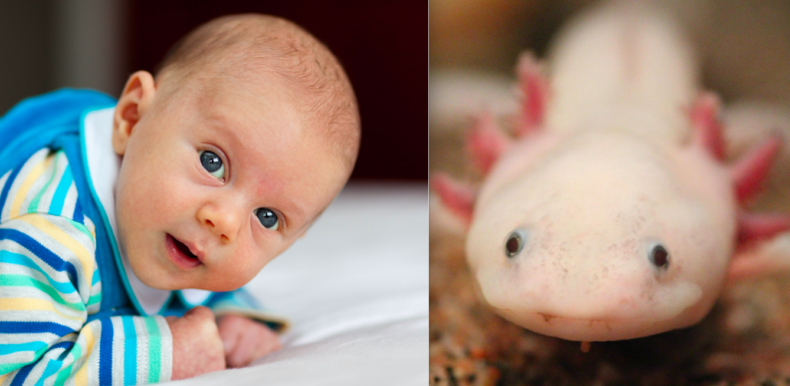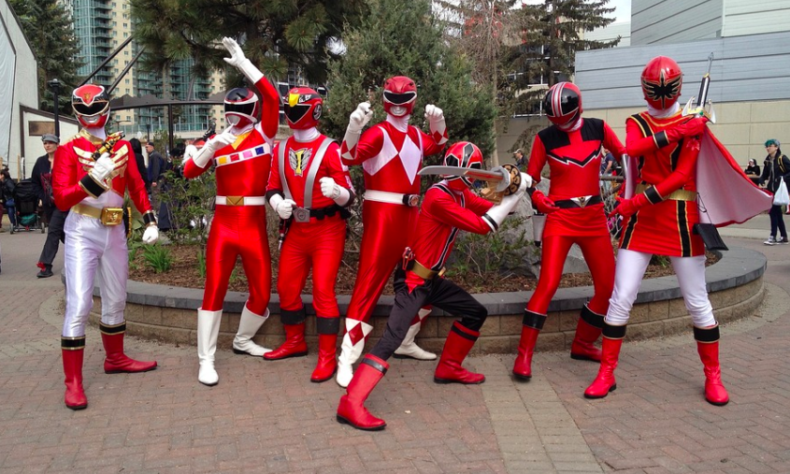I wrote this last year after a story I wrote for Nature. As the axolotl is inches toward extinction in the wild, along with so many creatures these days, it’s worth it to remember what makes them so cool.
 Last month I published a story in Nature about the sad story of the axolotl. It’s a tragic tale of an incredibly bizarre creature looking at extinction in the wild. Of the many odd attributes of the axolotl – ability to regrow limbs, giant cells, laughably big genome – the one that always gets mentioned by science writers is their neoteny.
Last month I published a story in Nature about the sad story of the axolotl. It’s a tragic tale of an incredibly bizarre creature looking at extinction in the wild. Of the many odd attributes of the axolotl – ability to regrow limbs, giant cells, laughably big genome – the one that always gets mentioned by science writers is their neoteny.
At first glance neoteny is one of those weird classifications – like radial symmetry – that is hard to describe and usually only applies to “lower” animals. Essentially it means that an animal never truly reaches adulthood but rather becomes a sort of giant breeding baby. To quote a lot of other science writers, it’s kind of like Peter Pan.
Presuming Peter Pan never went through puberty but somehow got really big. And then, um, started having sex as a giant hairless boy?
It’s kind of cool but also kind of random. In the world of evolutionary quirks, it’s not really as interesting as, say, venom or the ability to fly. Some critters never really grow up. Great, log that away as dinner party trivia that should never actually be used in a dinner party. Right up there with “Why pus smells bad” and “The difference between a quasar and a pulsar.”
Then I stumbled on a theory that turned this whole idea on its head. You see, it seems that we humans are also neotenic.
Okay, so I might be stretching it a bit there, but there is plenty of evidence to suggest that, compared to apes and proto-humans, we are essentially giant, humping Peter-Pan-like creatures. In fact, even the legendary Steven Jay Gould had to admit that this version of human evolution makes a lot of sense.
Think about a baby chimp. Little teeth, not as much hair as Mommy, kind of a flat face. Sound familiar? To a lot of primates, humans look like babies that just kept growing. Other arguments in favor of the humans-as-humping-Peter-Pan theory include our large, baby-like heads, thin skulls, relatively weak muscles and short arms.
All babies have traits that inherently make us want to protect them. Interestingly, many of these traits are also on the list of “Things I most want to eat on my child.” Ohhh, those short, fat legs…

Anyway, the theory goes that perhaps we held onto these traits in order to create social cohesion, being that we just can’t resist big eyes and short, helpless arms. Or maybe males selected juvenile-looking females who then passed that on to their babies. But no matter why we did it, it’s hard to argue that a strong, hairy, large-browed protohuman wouldn’t take one look at a modern human and burst out laughing.
Another classic neoteny trait is a long maturation process. Ironically, animals that look just like babies when they are adults take a long time to get there. Here, of course, humans fit the bill perfectly. Whereas dogs and cows take a just a couple years to reach maturity and gorillas and chimps, a little over a decade, humans take 15 or 20 years. In the California tech world, human males don’t reach adulthood until 35 or so and only reproduce around 40. If at all.
But there are a few benefits to never growing up into a proper hairy, toothy primate. For one thing, neoteny seems to encourage bigger brains. For another, it also tends to allow animals to live longer. In fact, some experts argue that human neoteny went part and parcel with tool use and our other many clever behaviors.

Of course, there are limits to what you can do with this model. It’s not much good to compare within our species – between races or individuals – because it doesn’t really apply to such subtle differences and, frankly, all humans look pretty much the same to a monkey. Still, I can’t help but think of that geeky kid in high school whose voice hasn’t dropped yet getting shoved into a locker by a Neanderthal football player.
All of this said, like many aspects of human evolution this is not a closed question. Some point out that we have oddly long legs and big noses for neotenic creatures. Also, being neotenic isn’t like being pregnant or late to dinner. There’s no clear line marking it and enough gray shades to make the whole conversation moot.
Also, it’s hard to generalize when it comes to big animals that don’t have a formal metamorphosis. Don’t dogs look pretty much like big puppies? It turns out, yes and no. You see, while a golden retriever might look wolfish to you and me, to a wolf, it looks a lot like a cub. Certainly not the long-limbed, long snouted animal they would see as a threat. By this logic, neoteny was one of the many sacrifices man’s best friend made for a spot next to the fire.
In the end, I’m not sure I buy this whole theory. It’s fun to think about and certainly explains a lot about why we are the way we are. But these definitions are so soft that they start to feel almost arbitrary. Also, I don’t much care to be known as a species of baby-faced primates.

I seem to recall that there is some interesting research out there on foxes which were bread to be pets (in Russia?) over may successive generations and surprising outcome was that docility (is that a word) went hand-in-hand with neoteny. Fascinating stuff.
And here’s a BBC article on those foxes: http://www.bbc.com/earth/story/20160912-a-soviet-scientist-created-the-only-tame-foxes-in-the-world
(I can’t believe I typed “bread” instead of “bred”.)